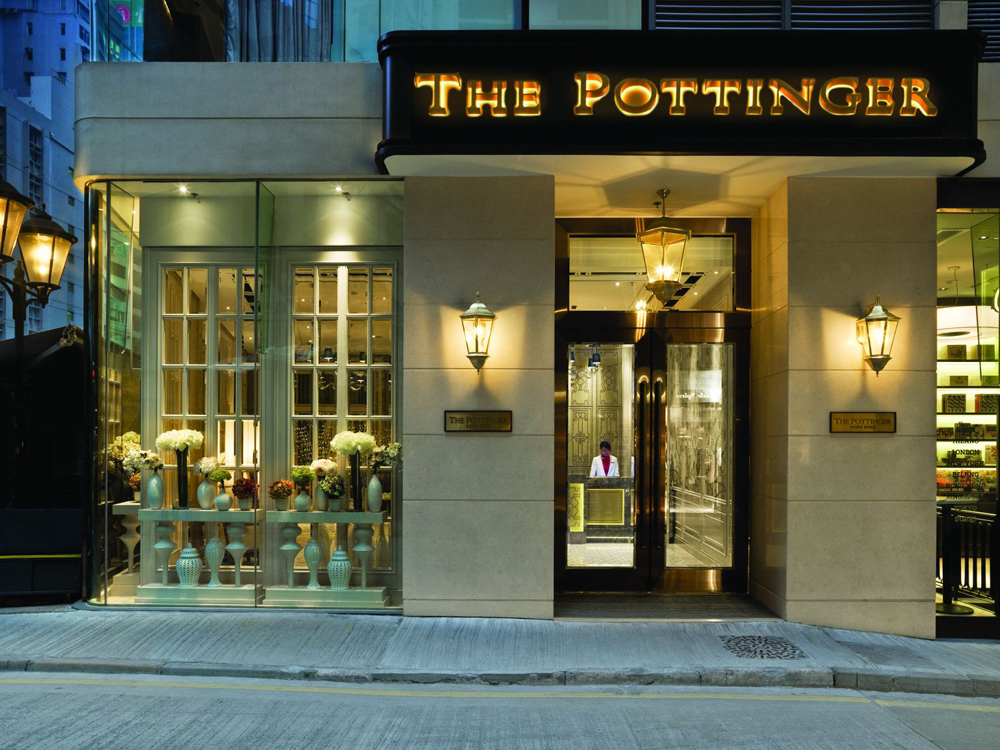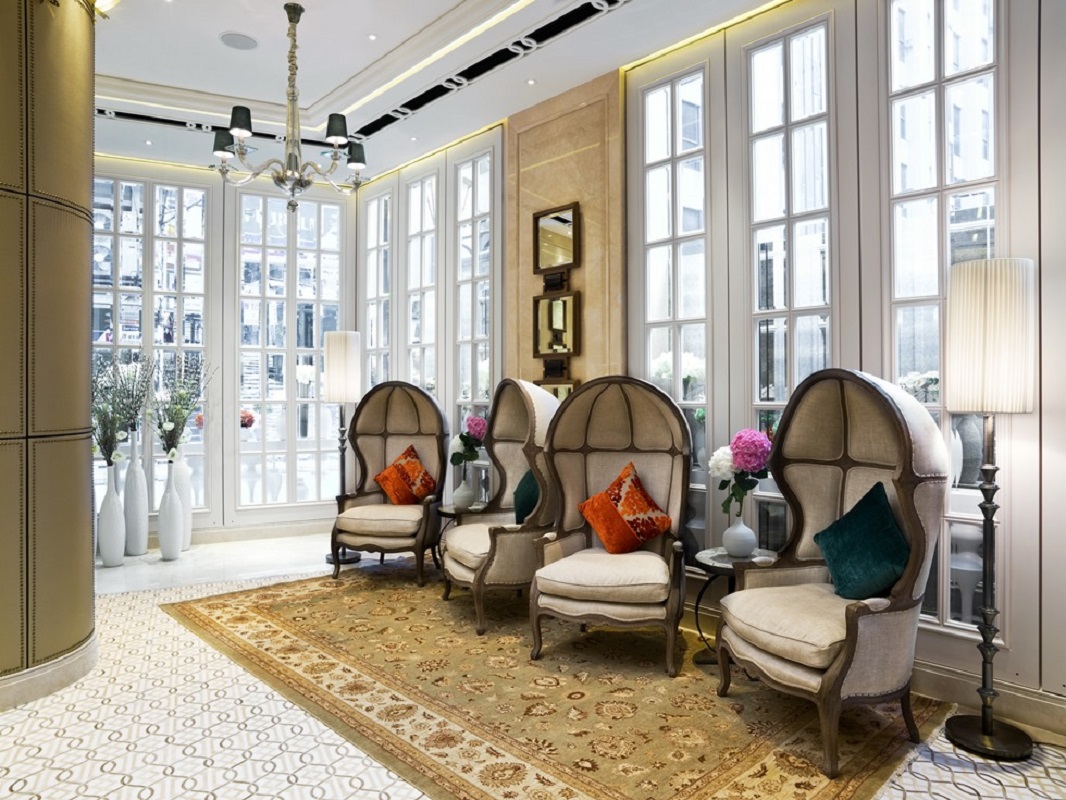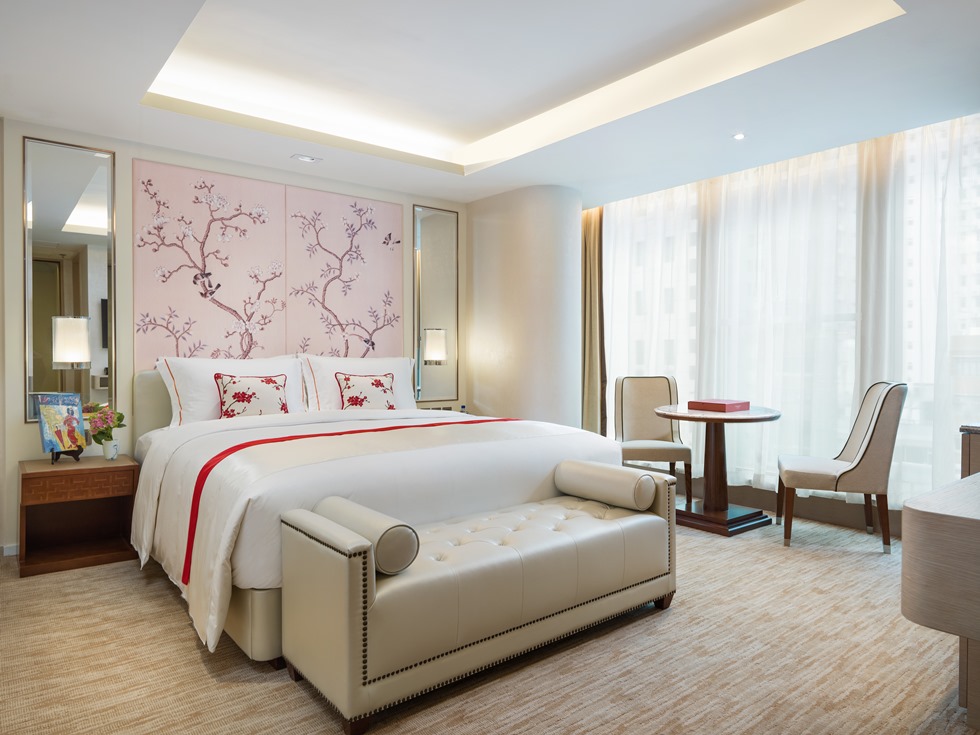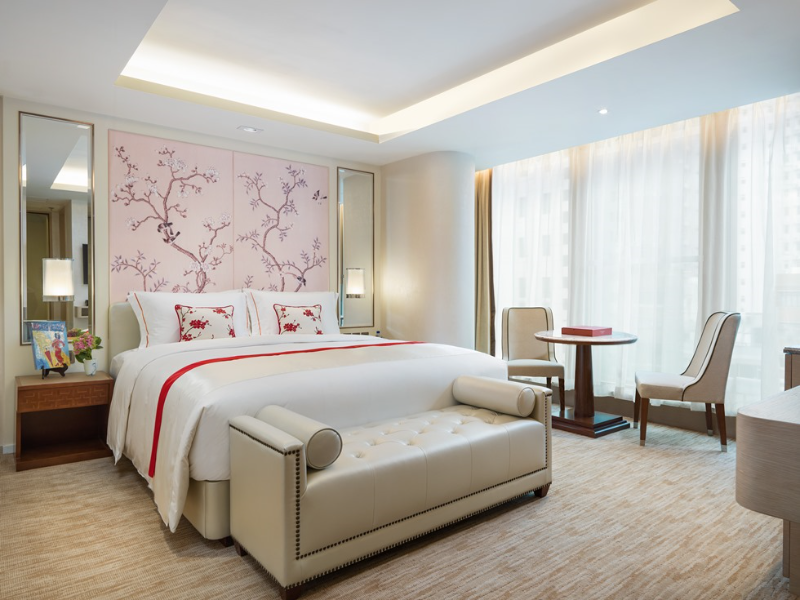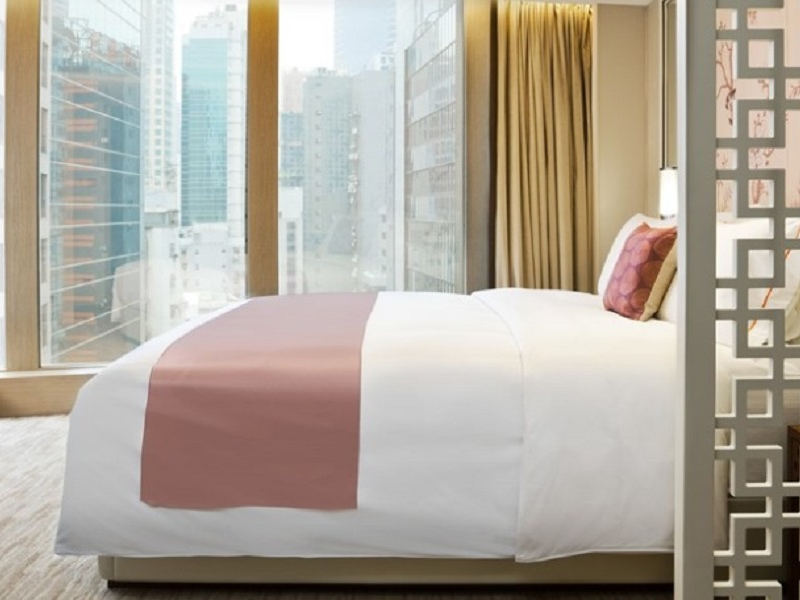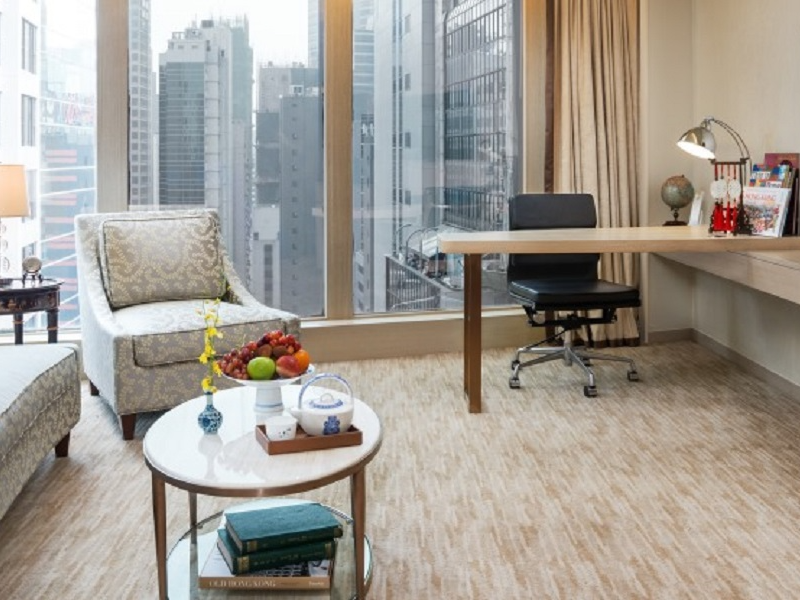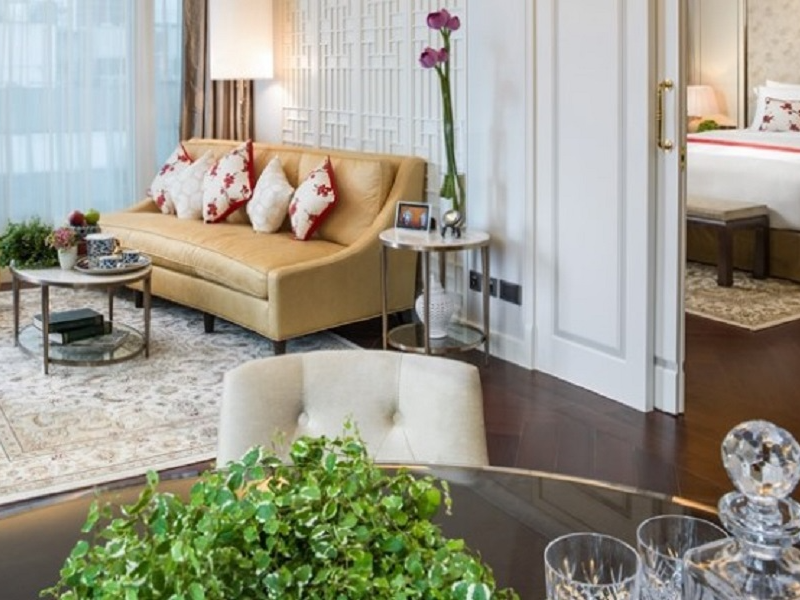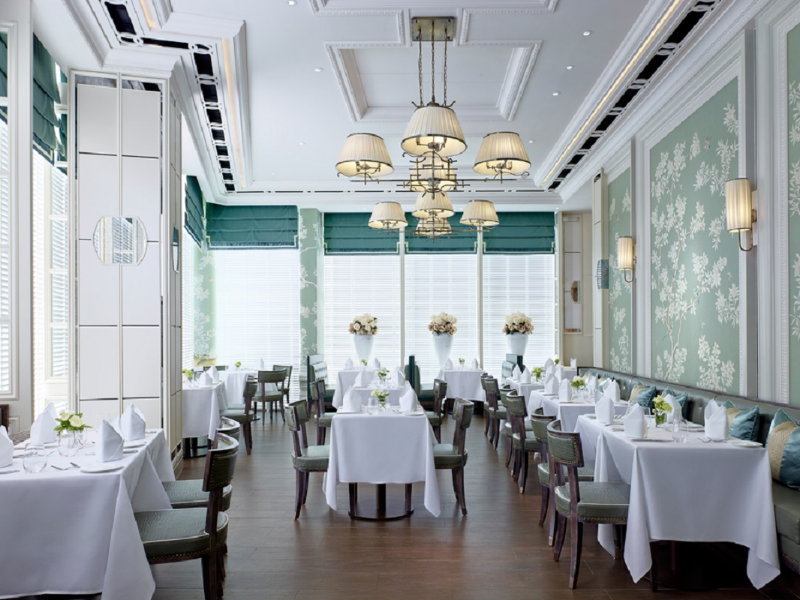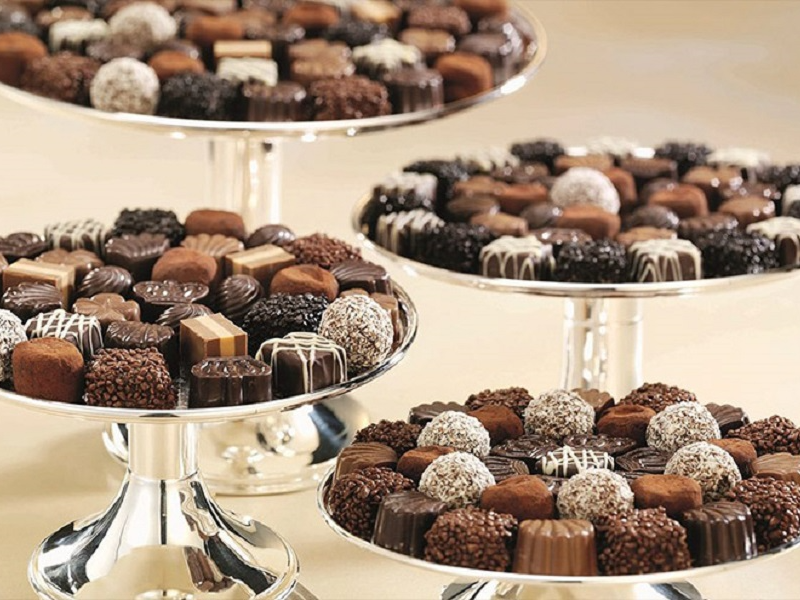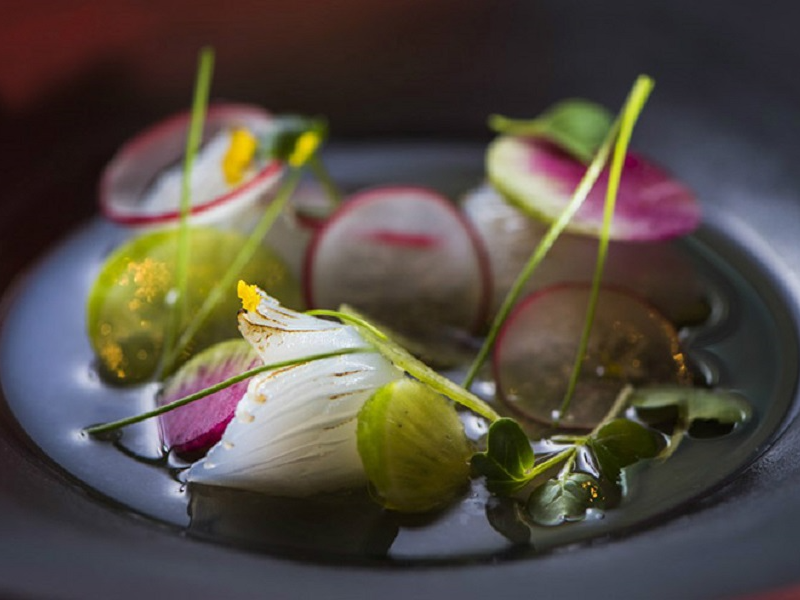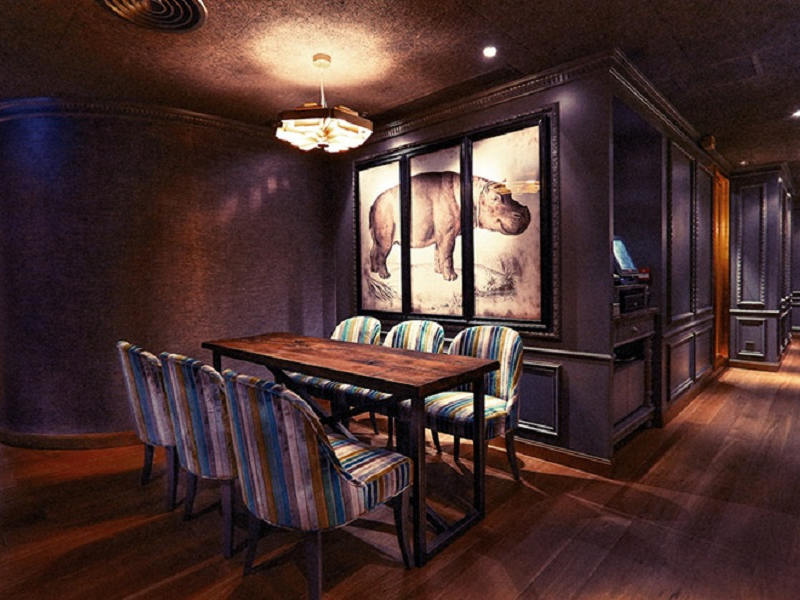.Pottinger Street was named after Sir Henry Pottinger, the first Governor of Hong Kong. Being the first historic stone slab street in Hong Kong since 1840s, the street is granted Grade I historic status by Antiquities Advisory Board of Hong Kong. It was originally paved with stone slabs, which it is better known as the Stone Slab Street by the locals. To ascend or descend further along Pottinger Street, intriguing scenes of distinctive green tin hawker stalls, century-old tenement buildings, stylish and upscale boutique stores can be found.
Six cosy, Studio Suites named after the streets around The Pottinger Hong Kong are designed with a touch of oriental flavour, heritage and a sense of home.
WELLINGTON SUITE
The street was named after Arthur Wellesley, first Duke of Wellington. There are many famous restaurants along Wellington Street, like Yung Kee, Tsui Wah restaurant and Mak’s noodles at the east side while famous Lin Heung Tea House is at the west side. World-wide famous Lan Kwai Fong is near the east side of the Wellington Street.
HOLLYWOOD SUITE
Middle Sheung Wan was the earliest area to be developed since the beginning of urban development of Hong Kong, and Hollywood Road was the first road ever built. The origin of the road comes from the holly shrubs which were growing in the area when the road as constructed.
We can find the theme of “Modernity meets Heritage” throughout Hollywood Road. Talking about the tradition side, there is a Man Mo Temple which was built in 1847, it is popular among believers of the God of Literature (Man) and the God of War (Mo) all the year. Besides those modern antiques shops, there are many western restaurants and bars in Soho area which is situated on the southern side of Hollywood Road.
CONNAUGHT SUITE
In 1889, the north shore of Central was under extensive reclamation and Connaught Road, the major road that runs the length of Central, was named after Prince Arthur, Duke of Connaught and Strathearn when he visited Hong Kong in 1890. The road construction was completed in 1903 and started open to traffic. Distinguished architectures representing Hong Kong are now situated along Connaught Road including International Finance Centre (ifc), Statue Square, Hong Kong City Hall and more.
STANLEY SUITE
At the end of the Stanley Street and near the junction of Cochrane Street, there are still some Dai Pai Dong that have been operating for many years. The popular phrase “Squat on Dai Pai Dong” literally means that there is a long wooden bench outside the Dai Pai Dong and it can sit 4-5 customers.
LI YUEN SUITE
Under the development of the British colonial government, streets were mainly named after members of British Royal Family or important officials. In the first central district reclaimed land auction in 1891, Kam Li Yuen, a Tai Shan rich merchant, successfully won the bid for the land of Li Yuen Street East and West and named the land after himself. In the colonial period, it was very rare for the streets in central district to be named after a Chinese. Thus, these two streets represent the status of a wealthy Chinese businessman at that time.
CENTRAL SUITE
Central used to be little more than a sandy beach with a footpath running along it. In 1840s, the British picked Central as their administrative heart and by then, Central became the new centre of commerce and administration and quickly attracted many local Chinese looking to work, trade and make money. Extensive reclamation was done over the years and Queen’s Road in Central marks the original shoreline. Central, is now widely known as the dynamic and vibrant centre of Hong Kong, a pivotal hub of business and finance, shopping, dining, culture and entertainment.

